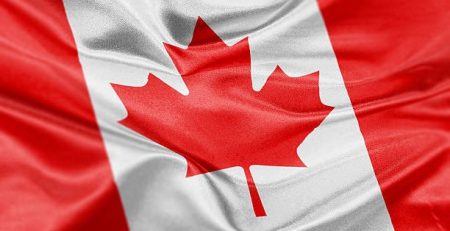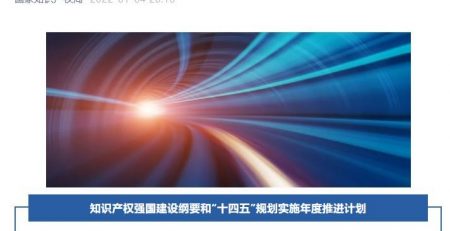Types of goods or services that can be trademarked in China
In the process of trademark prosecution, it is common for the applicant/registrant to restrict or even give up on some of the goods or services associated with a brand in order to gain registration or prevent confusion. This is permitted by jurisdictions like the United States and the European Union, so long as the modification does not increase the extent of the trademark’s protection. In light of the current examination procedure in China, things are less clear-cut.
Limitations on the types of goods or services that can be trademarked in China
Chinese trademark registration can be obtained in two ways: by submitting a national application to the China National Intellectual Property Administration (CNIPA) or by requesting an international registration (IR) under the Madrid Protocol with China as the designated party. Different sets of laws apply to the two routes.
The Classification of Similar Goods/Services (Classification Manual), which is the Chinese version of the Nice Classification of Goods and Services, is the primary resource used by the CNIPA when examining the goods and services of a national application (Nice Classification). The Classification Manual separates goods/services into subclasses so that, unless otherwise indicated, those falling in the same category would be considered similar in principle. The CNIPA accepts products/services from the TM5 ID List and a quarterly updated database of eligible products/services in addition to the conventional items mentioned in the Classification Manual.
The CNIPA makes an effort to update the accepted entries on a regular basis, however, it is still difficult to maintain the accredited goods and services updated. The CNIPA has just recently begun to accept software platforms, non-fungible tokens (NFT) based on blockchains, as well as the management, issuances, and transactions related to NFTs.
Items not coming from the aforementioned source are frequently considered non-standard. Theoretically, applicants are allowed to submit applications for non-standard goods or services as long as the statement is precise and explicit. Nevertheless, the CNIPA is hesitant to accept non-standard goods and services because doing so would ostensibly lengthen the examination process and cause a backlog. This is supported by the fact that non-standard goods and services are more likely to be contested.
Only after the initial filing may brand owners discontinue any of the goods or services listed in the list of specifications for the national route. The Trademark Examination Manual (Examination Manual) for 2021 reiterates that the specifications applicants desire to delete must be identical to those indicated in the first application, and applicants may not change or limit the original specifications. Thus, it is difficult to limit the specifications, even within the initial scope. A popular strategy to get around problems where a prior mark is mentioned in the assessment process is to delete specific products or services. Brand owners may choose to cancel the registration on all or some goods and services if the trademark has already been registered and is being accused of infringement.
The CNIPA uses a set of far more lenient examination criteria when it comes to the IR route. Examiners are more receptive to non-standard descriptions when they translate requirements into Chinese and classify them into matching subclasses. Examiners are more willing to use discretion in determining the acceptability of non-standard descriptions due to the discrepancies between the Nice Classification and the Classification Manual and the nuances during the translation process, giving brand owners more freedom to choose the desired products and services.
The CNIPA permits applicants to restrict the list of goods and services in relation to IRs either before or after registration. Owners of trademarks may change specifications by adding positive limitations or exclusions, deleting or keeping specific designations, or both, so long as the changes do not enlarge the original scope. The Examination Manual also indicates significant that the new list of goods and services may still be contested if it does not correspond to the Chinese classification. In actuality, the limitation will be rejected if it broadens the original scope.
The CNIPA will announce that this limitation is invalid in mainland China if the amended specifications are rejected, and all subsequent examinations will be based on the old specifications. If registrants want to change the goods or services covered by an IR, they can choose to permanently remove the mark from the International Register or give up their trademark rights for any or all of the designated goods or services in China. Although the Inspection Manual states that partial cancellation permits registrants to delete certain sections, restate the specification, and limit goods/services in the examination method, this could increase the original protection, which would be in violation of CNIPA regulations.
The IR route often provides more flexibility and helps brand owners to define specifications in a more deliberate manner. It would be helpful to restrict the products and services intended for actual commercial use and to lessen the burden of proof on the registrants when presenting use evidence in subsequent non-use cancellation actions.
Since the CNIPA heavily relies on the Classification Manual and the subclass regime, the applicants could only abandon all goods and services in the subclass(es) that are exactly the same as those of the mentioned mark if limits by way of clarifying the specifications failed to remove the barriers. Both domestic and foreign routes are subject to abandonment.
The CNIPA excludes all wholesale and retail services other than those for veterinary medicine, veterinary medicine, sanitary preparations, and medical supplies in Subclass 3509, in contrast to other jurisdictions that permit trademark registrations on retail services. In reality, brand owners frequently substitute “sales promotion for others” (Subclass 3503) or “display of goods on communication channels, for retail purposes” (Subclass 3502) for wholesale and retail services out of expediency. The CNIPA will, however, deny such a change because it broadens the original protection. The reasoning behind the rejection is that “display of goods on communication media” is distinct from “retail services,” and “promotion” has a broader scope than “retail.” Therefore, brand owners were limited to using the Subclass 3509 standard descriptions or extremely similar requirements for retail services.
Products and services that the Chinese government deems illegal are not acceptable for trademark registration. Pornography, gambling, and the marijuana industries are all expressly prohibited in China, and the CNIPA forbids the sale of any goods or services related to them. Therefore, neither method will allow for the registration of a trademark for these goods or services.
The CNIPA also rejects goods/services related to cryptocurrency and virtual currency. In a recent IR refusal, the CNIPA partially rejected an IR mark on the goods “computer software for managing cryptocurrency and NFT transactions using blockchain technology; downloadable computer programs (software) for virtual currency; downloadable software for virtual currency” (Class 9) and the services “virtual currency trading services; virtual currency brokerage; virtual currency price information providing services; financial transaction services of cryptocurrency through internet platform” (Class 36), while giving a greenlight to items directly related to cryptocurrency trading including “downloadable electronic wallet; software for the exchange of electronic money” (Subclass 0901), software for trading blockchain-based goods including “software for mobile devices for issuing and trading digital certificates for ownership and license of blockchain-based digital content; software for mobile devices for issuance and transaction of blockchain-based NFT” (Subclass 0901), and electronic money paying services including “electronic wallet payment services; digital certificates brokerage for ownership and license of online blockchain-based tangible and intangible goods” (Subclass 3602). But in the Classification Manual, “downloadable electronic wallet” and “electronic wallet payment services” are common definitions that might be widely understood to include virtual currency and cryptocurrency. It is still not obvious how the CNIPA distinguishes between the products and services connected to virtual currency.
Before deciding to file, brand owners are advised to consider their trademark portfolios and business needs. It would be prudent to submit national applications with the CNIPA where standard descriptions are both adequate and explicit. However, in the following situations, brand owners are urged to submit an IR and designate China:
- brand owners want to secure an early filing date but still hesitate over the specifications; or
- the designated goods/services are non-standard descriptions.
Instead of making any changes to the specifications, some brand owners who are trying to overcome registration barriers in China may look into the possibility of coming to an agreement with the applicant/registrant of the prior mark on restricting or excluding the commercial use of a mark in certain areas. Such an agreement shouldn’t affect the results of the CNIPA assessment, theoretically.
Brand owners are therefore particularly recommended to file an additional IR application (designating China) with the updated descriptions in case they are obliged to specify the goods/services during the national filing process. Once the IR passes the preliminary examination, brand owners may choose to cancel the national trademark so as to secure the registration on the intended items and block similar marks filed after the national filing.
Therefore, it is highly advised for brand owners to submit a second IR application (designating China) with the amended descriptions in the event that they are required to list the products or services during the national filing procedure. Brand owners have the option to revoke the national trademark once the IR passes preliminary review in order to ensure registration on the specified goods and prevent the use of identical marks submitted after the national filing.
***Other Articles***
– You could see How To Register Trademark in China here.
– You could visit here to see Procedure of Trademark in China.
– You could visit here to check Required documents of filing trademark in China.
Contact AAA IPRIGHT: Email: [email protected]
Or sending your inquiry by filling the form:











